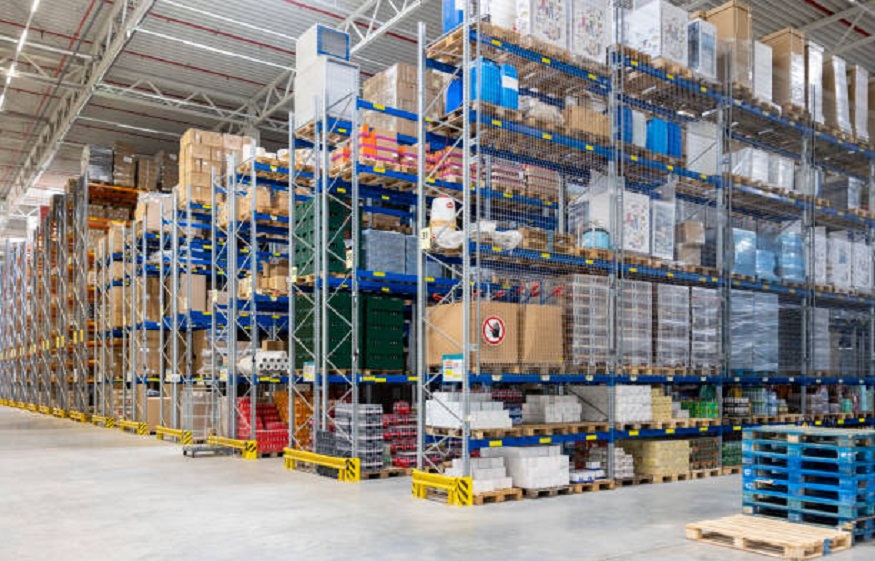With sustainability fast becoming a key issue for businesses across the globe, warehouses are not immune. With the effort to minimize environmental impacts, sustainable warehouse equipment has become the talk of the town for companies. This broader movement toward greener operations includes energy-efficient systems, recyclable materials and waste reduction strategies.
Sustainable design is becoming a focus for modern warehouse equipment. New warehouse designs often use energy-efficient lighting and HVAC systems as well as automated systems that can monitor and optimize energy consumption. The adoption of environmentally-sound materials in manufacturing equipment also helps us limit our impact. Many corporations are opting for suppliers that practice sustainability in manufacturing their products.
Plastics2go, for instance, is CIT’s brand of quality Plastic components as per sustainable practices. All their products are designed to last, be recycled and be part of a circular economy. Castors2go also focuses on durable materials that are eco-friendly. Sustainable practices go a long way in improving environmental effects whilst improving efficiency and cost effectiveness in a warehouse.
Sensitivity to common issues in warehouse operations
There are numerous warehouse problems that can impact the overall efficiency and profitability of a facility. Space limitations, improper inventory management, equipment downtime, and safety concerns are just a few of these challenges. To resolve these issues a comprehensive approach is needed that combines both technology and operational components.
The biggest challenge among these is the efficient use of space. The evolution of warehouses has increased the demand for adaptable storage systems. Another approach would be using adjustable shelving systems and modular storage solutions, which can be adapted to the size and type of products being stored. Proper use of space leads to better inventory management that can further enhance retrieval times and eliminate damage.
Warehouses also struggle with inventory control. State-of-the-art warehouse management systems (WMS) streamline tracking and movement of goods, minimizing errors and helping keep inventory levels accurate. Integration with real-time data systems enables managers to track stock levels in real-time, automating reorder processes and preventing stock shortages or overstock situations.
This assimilates the fact that, equipment downtime affects productivity. Predictive analytics and regular maintenance can significantly reduce the frequency and duration of downtime. Purchasing quality equipment from a reputable company such as Castors2go will equip you with machinery to last against the day-to-day wear and tear of your business. Using high-quality components results in fewer breakdowns, and thus you can always keep the operations running even under heavy load.
Workforce Management and Training
No matter how technologically advanced the warehouse equipment, its efficacy is only as good as the people running it. Staff must receive comprehensive training and know how to properly utilise warehouse equipment—otherwise, the value offered by the automation is wasted. Operators play a pivotal role in the safe, efficient operation of the machinery, and the need for operators to receive ongoing training and upskilling to keep pace with the technology is essential.
These training sessions will include not only the technical aspects for operating the equipment but also the safety protocols and emergency procedures as well. This type of training keeps safety awareness high and reinforces how workers would respond to an unexpected incident. Investing in employee training enables companies to mitigate accident risks and enhance operational efficiency, leading to a culture of continuous improvement.
Especially today, modern workforce management systems have better capabilities built in with digital management tools for enhanced scheduling, performance tracking, and real-time communication. These can better enable managers to use resources according while pinpointing when more training or support for workers is necessary. The technology that goes into workforce management also allows for the analysis of performance data and how it can be leveraged to streamline workflows and increase productivity.
Final thoughts
In another case, one logistics business altered its warehouse design by implementing modular shelving systems and adjustable gear solutions — the kind of flexible concepts potential customers expect. The company’s ability to adapt quickly to dynamic market demands, optimize space utilization, and minimize operational costs was made possible by this flexible approach from Castors2go. The success of this initiative shines a light on the need for the integration of technology and strategic planning within warehousing management.

